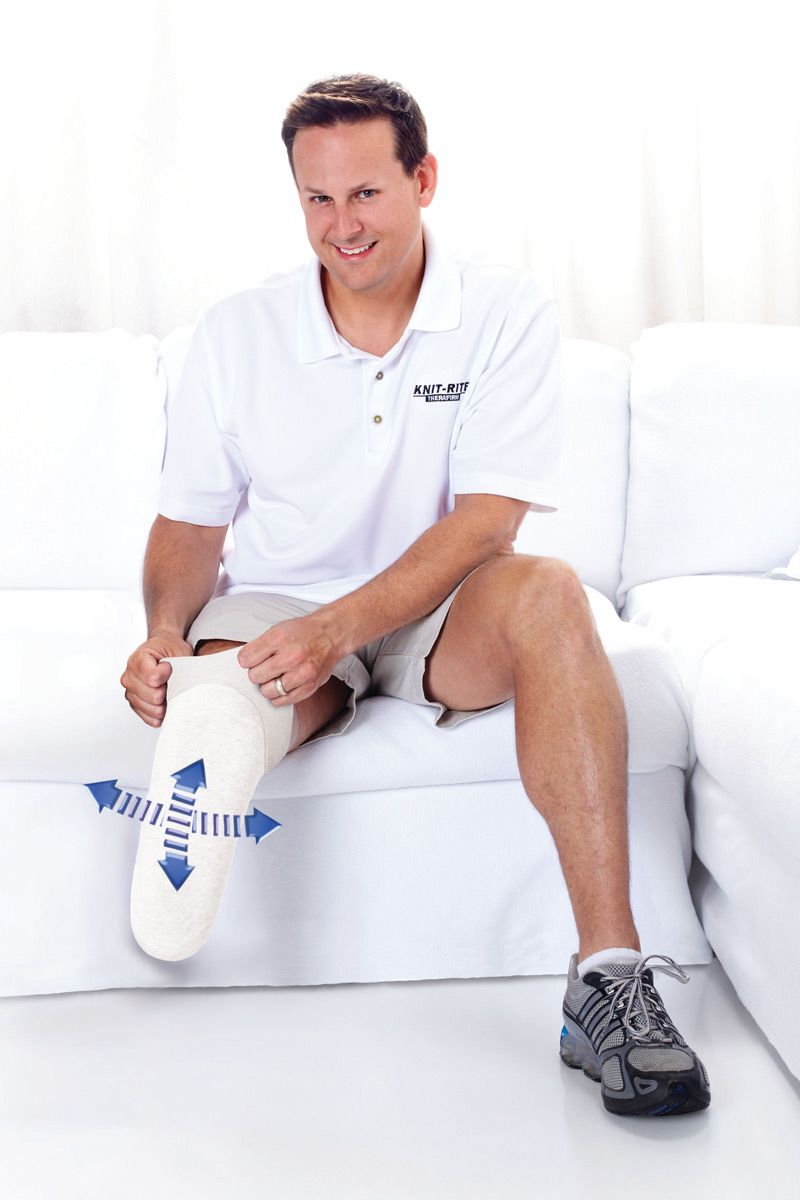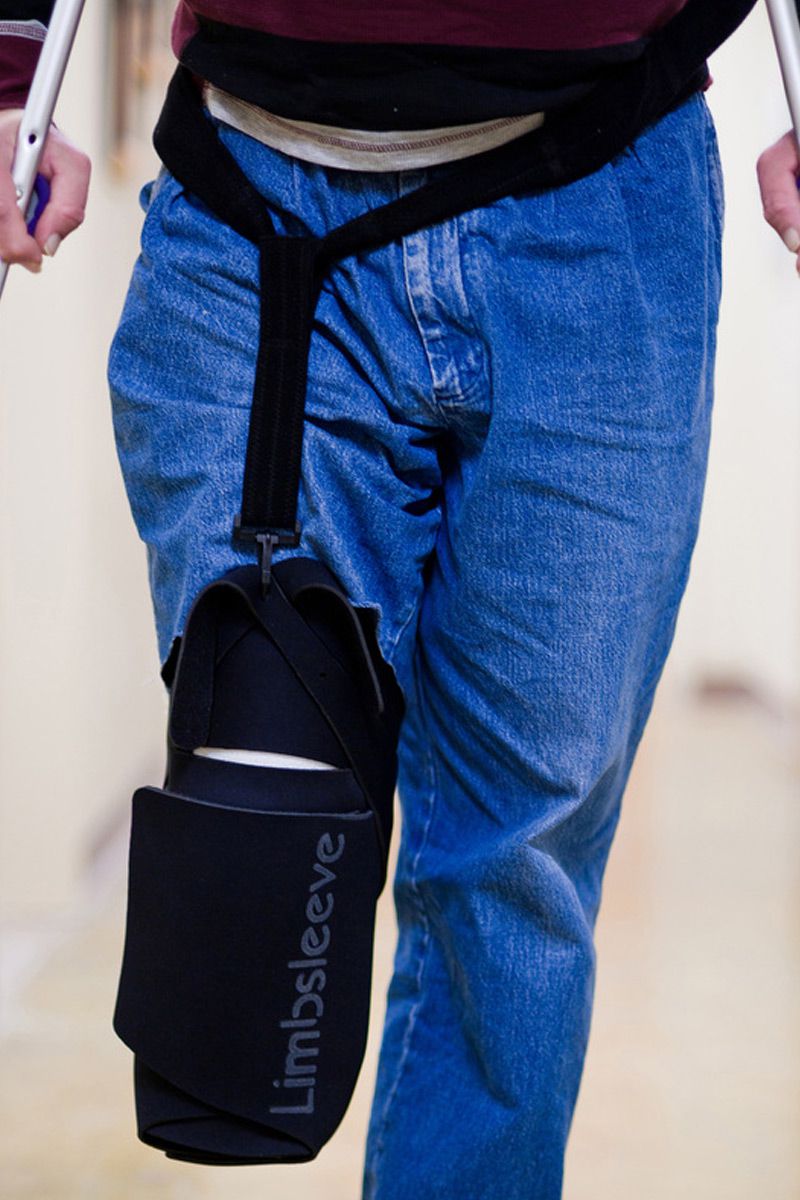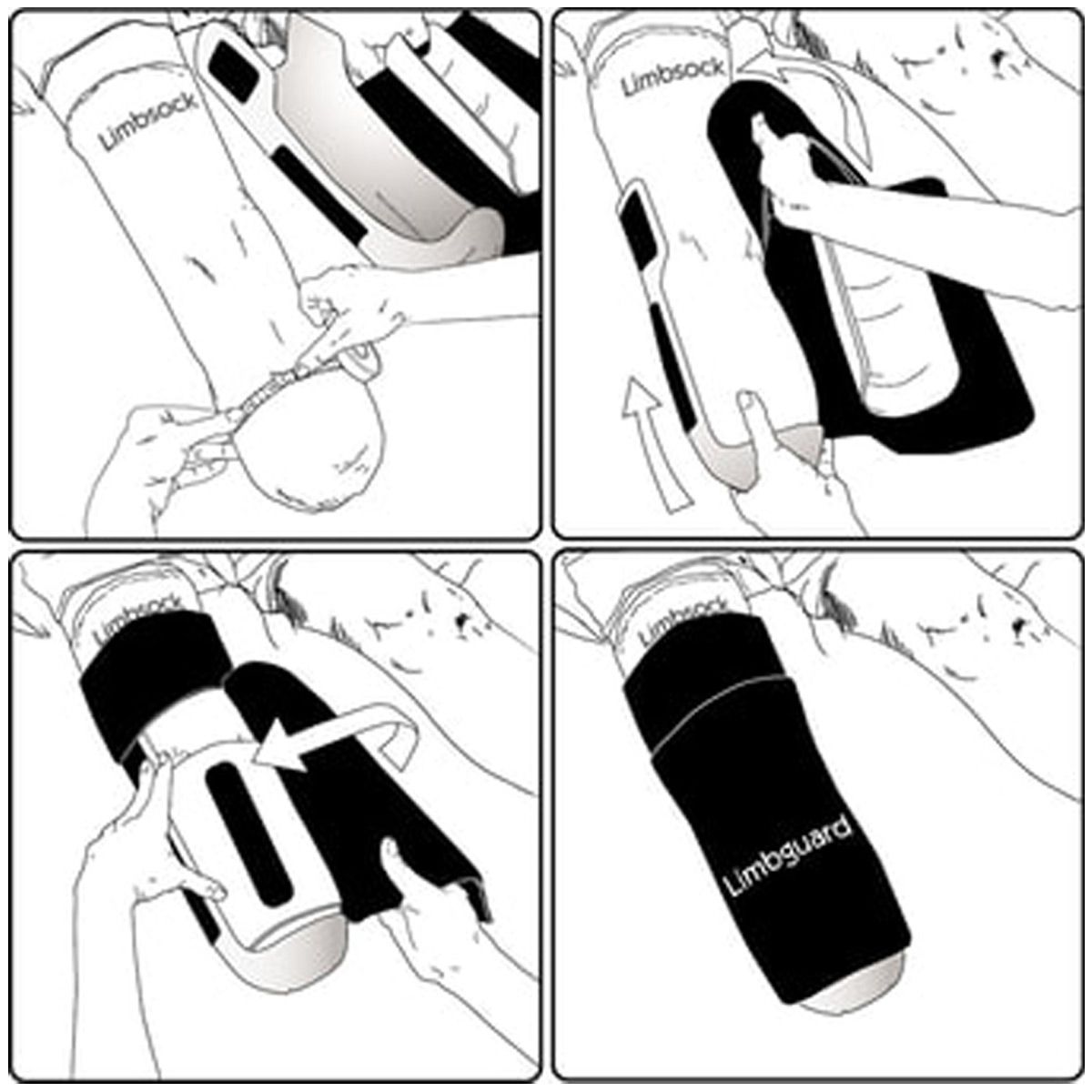Prosthetics Support Services
Pre & Post Operative Care
Complimentary Consultation

Stump Shrinkers

Image courtesy of Knit-Rite, Inc.
Limb Protectors
Immediately after an amputation, a special device called a limb protector may be ordered by your surgeon. This is especially beneficial after a below-knee, or trans-tibial, amputation. It typically has a hard outer shell with thick padding at the amputation site, and velcro straps for easy removal to allow bathing and bandage changes. Limb protectors provide some important benefits:
Protection From Injury
Soft, thick padding and a protective outer shell protect the sensitive limb from rubbing on the bed, bumping into furniture, or being injured in a fall. A common cause for injury or even additional surgery is when a person is groggy from taking pain killers after amputation, they may not be fully aware and try to get out of bed, then fall on their fresh amputation and be badly injured. Wearing a limb protector greatly reduces this risk, as patients have been known to land directly on the amputated limb with no damage to the surgical wound when wearing a protector.
Prevention of Knee Contracture
After below-knee amputation, your knee can tighten in a bent position, making it difficult or impossible to fully straighten your leg. This is called a contracture, and it creates problems when you’re ready to start walking with a prosthesis. Wearing a limb protector keeps the knee straight during the healing process and stops contractures from setting in. It’s especially useful when you are sitting in a wheelchair, as it will prevent your residual limb, or stump, from dangling down. Sitting with your limb hanging off a chair not only leads to contracture, but also makes swelling worse, so using your limb protector to keep the end of your limb propped up is an important part of the healing process.
Preparing Limb for Prosthetic Fitting
A limb protector helps speed your healing and prepares your limb for using a prosthesis. The protector provides a gentle compression to reduce swelling & improve circulation. It helps “desensitize” your limb, so tender nerve endings become less painful and you are able to tolerate pressure for prosthetic use. The limb protector also shapes your residual limb, helping it to heal in an even, symmetric shape for optimal prosthetic fitting.

Image courtesy of Limbguard
Donning Instructions

Image courtesy of Limbguard
New Patient Information
Patient Registration
Our Product Catalog
FAQ & Glossary
Addtional Info
Central Florida Locations
Innovative Partners







